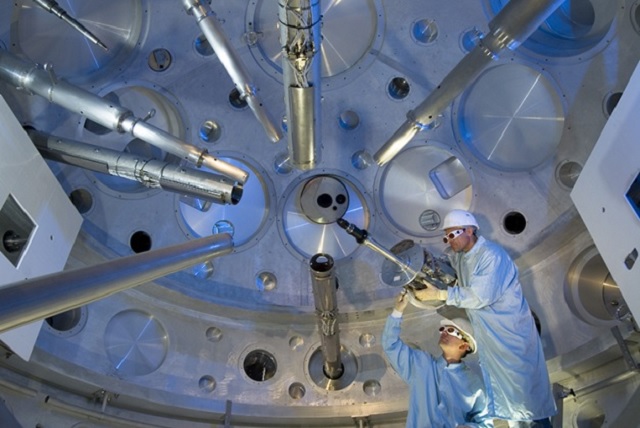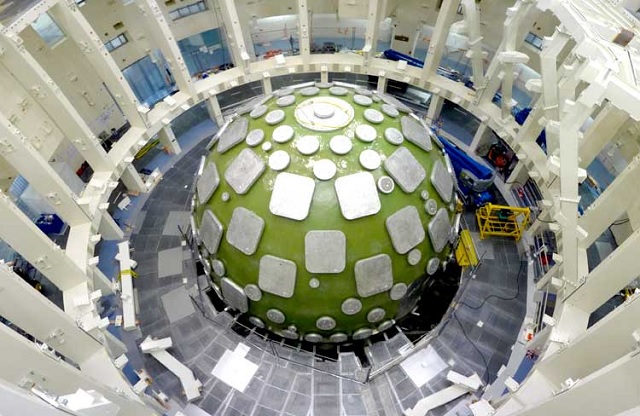
PHOTONIS was successfully qualified by the CEA (French Atomic Energy and Alternative Energies) to provide Streak Tubes and Microchannel Plates (MCP), both high technology and performance instruments that enable the diagnosis of light phenomena inside the experimental chamber.
On 23 October 2014, PHOTONIS was present on the CEA site, located in the town of Barp near Bordeaux, for the commissioning of the Laser Megajoule (LMJ) which was inaugurated by Mr. Manuel Valls, Prime Minister with the Army General Pierre de Villiers. The Laser Megajoule project (LMJ) was launched in 1996 when the government decided to stop nuclear testing in French Polynesia.
LMJ is a great experimental tool with 178 laser designed to provide a target of a few millimeters in a few billionths of second, producing greater than one million joules of energy light beams. This micro-target is installed in an aluminum sphere and boroned concrete of ten meters in diameter and a weight of 300 tons. At the heart, we could reach extreme conditions of temperature and pressure, similar to those encountered during the operation of nuclear weapons.
After ten years of work the system is finally operational; and it is Manuel Valls who conducted a test firing of the Laser Megajoule.

With the commissioning of the LMJ, France became the first country in the world with a simulation program of this level. This high performance technological tool ensures the modernization of deterrence, a major strategic focus of the White Paper on defense and national security, while respecting the commitment of our country related to the nuclear test ban.
This project is also a symbol of scientific cooperation between civilian and military organizations. Beyond the sole sphere of defense, commissioning LMJ benefits many civilian researchers. In addition, it gives a new dynamic to the region, with the creation of the cluster "The road lasers", with industry, start-ups and laboratories, such as the Centre for the Study of Intense Lasers in Aquitaine (Celia) or the Institute of Lasers and Plasmas.
The first shooting simulation will take place on 2 December. In 2015, it is expected to perform between 50 and 100 simulations. Thereafter, the regime "cruise" is 200 per year, 20% of which will be dedicated to civilian research. PHOTONIS is proud to be playing a part in this great experimental tool.
To learn more about PHOTONIS and its scientific sensors, visit the PHOTONIS web site at www.photonis.com/en/ism
About PHOTONIS
PHOTONIS is a multi-national high-technology group with more than 40 years experience in manufacture, sales, and innovation of specialized photo-sensor and electro-optic technologies. The PHOTONIS Group operates internationally in the Night Vision, Industrial, Scientific, Medical and Imaging markets.
PHOTONIS designs and manufactures a wide range of custom and standardized components and assemblies for space telescopes, high-energy physics, and mass spectrometry as well as other analytical scientific instruments, and holds several patents in these fields.
PHOTONIS employs approximately 1000 people, has design and operational facilities across Europe, North America and Asia and has annual sales of 170M€. For more information, please visit the web site at www.photonis.com